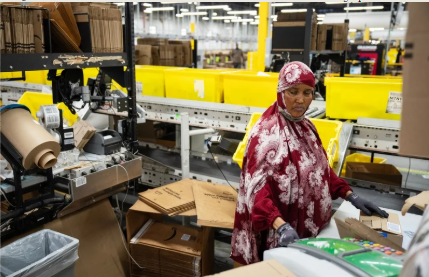As global trade tensions continue to escalate, economists and business leaders in Minnesota are raising concerns about the long-term effects of U.S. tariff policies on the state’s export-heavy economy.
Dr. Stefanie Lenway, former dean of the Opus College of Business at the University of St. Thomas, says new rounds of tariffs imposed on imported goods — particularly those involving steel, aluminum, and consumer products — are already causing disruption in Minnesota’s business community. According to Lenway, the ripple effects are being felt in multiple sectors, including agriculture, manufacturing, and retail, with small and mid-sized companies among the most vulnerable.
“Minnesota is especially exposed because we rely heavily on exports,” Lenway said. “Tariffs act like a hidden tax on businesses. They raise input costs, complicate supply chains, and reduce competitiveness, particularly for companies that rely on global sourcing or international markets for growth.”

In recent years, Minnesota has carved out a significant role in the global economy. The state exports billions of dollars’ worth of goods annually — from agricultural commodities like soybeans and corn, to advanced medical devices, machinery, and electronics. Many of these goods are shipped to major international trading partners including Canada, Mexico, China, and the European Union.
But rising tariff rates have complicated those relationships. For manufacturers, higher costs on imported materials like steel and aluminum mean thinner margins and pricing pressures. For farmers, retaliatory tariffs from foreign governments have led to slumping prices and reduced demand. According to Lenway, these trade tensions put particular stress on rural economies and mid-sized manufacturers that lack the financial cushion to absorb cost spikes or redirect supply chains.
“We’ve heard from businesses that are deferring capital investments or hiring plans because they’re uncertain about what the trade environment will look like in six months,” Lenway said. “This uncertainty is just as damaging as the tariffs themselves.”
As global trade tensions continue to escalate, economists and business leaders in Minnesota are raising concerns about the long-term effects of U.S. tariff policies on the state’s export-heavy economy.
Dr. Stefanie Lenway, former dean of the Opus College of Business at the University of St. Thomas, says new rounds of tariffs imposed on imported goods — particularly those involving steel, aluminum, and consumer products — are already causing disruption in Minnesota’s business community. According to Lenway, the ripple effects are being felt in multiple sectors, including agriculture, manufacturing, and retail, with small and mid-sized companies among the most vulnerable.
“Minnesota is especially exposed because we rely heavily on exports,” Lenway said. “Tariffs act like a hidden tax on businesses. They raise input costs, complicate supply chains, and reduce competitiveness, particularly for companies that rely on global sourcing or international markets for growth.”
In recent years, Minnesota has carved out a significant role in the global economy. The state exports billions of dollars’ worth of goods annually — from agricultural commodities like soybeans and corn, to advanced medical devices, machinery, and electronics. Many of these goods are shipped to major international trading partners including Canada, Mexico, China, and the European Union.
But rising tariff rates have complicated those relationships. For manufacturers, higher costs on imported materials like steel and aluminum mean thinner margins and pricing pressures. For farmers, retaliatory tariffs from foreign governments have led to slumping prices and reduced demand. According to Lenway, these trade tensions put particular stress on rural economies and mid-sized manufacturers that lack the financial cushion to absorb cost spikes or redirect supply chains.
“We’ve heard from businesses that are deferring capital investments or hiring plans because they’re uncertain about what the trade environment will look like in six months,” Lenway said. “This uncertainty is just as damaging as the tariffs themselves.”


